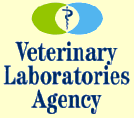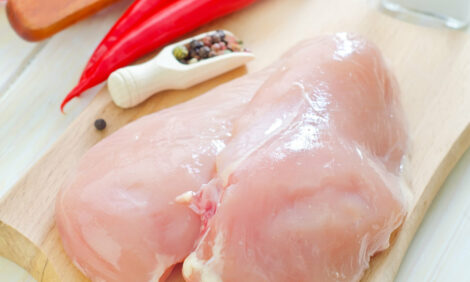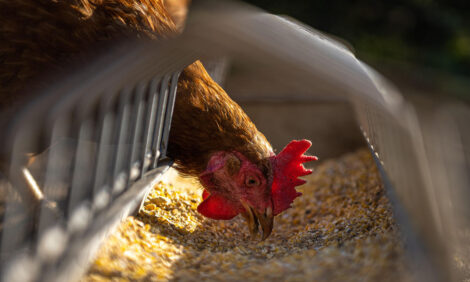



UK Poultry Disease Quarterly Surveillance Report - February 2005
By Veterinary Laboratories Agency - This report monitors trends in the major endemic poultry diseases and utilises the farmfile and VIDA (Veterinary Investigation Disease Analysis) databases. The report is compiled using disease data gathered by the network of 15 VLA regional laboratories which carry out disease investigation in the field.
 October - December 2004 - Published Feb 2005 Contents OVERVIEW (here) POULTRY STATISTICS NOTIFIABLE DISEASES: - Submissions to the EU reference - Laboratory - Imported Captive Birds - Fowl Cholera FOOD SAFETY AND ZOONOSES - Food Safety - Salmonella Report - Salmonella ZO4 Visits - Non-statutory Zoonoses ENDEMIC/NEW AND EMERGING DISEASE SURVEILLANCE VIROLOGY REPORT - Avian Virology Isolates 2004 - Blackhead in Turkeys - Blackhead in Chickens - Necrotic Enteritis and Bacterial - Spondylitis in Broilers OTHER POULTRY TOPICS - Mareks Disease - Avian Intestinal Spirochaetosis - Turkey Airsacculitis - Coccidiosis - Avian Pneumovirus - Infectious Bursal Disease - Uneveness in Broilers Appendix I – VLA Lasswade 12 histopathology submissions |
Highlights
- New IBV Strains
- Blackhead in Turkeys
- Blackhead in Layers
- Increase in Mareks Disease
Overview
The statistics on page 3 of this report show
that commercial layer chick placings have
increased during the second to fourth
quarters of the year and this may reflect
cautious optimism in that industry, particularly
in the free range sector, despite a drop in egg
prices paid to producers during the year.
In
contrast there has been a marked drop in
broiler parent chick placings through the year,
and also a decline in commercial broiler chick
placings, although broiler numbers as a
whole remain high. However the rise in
imports remains a concern. Placings of
turkey poults are down but comment in
Poultry World magazine suggests this has in
part been due to a move to larger birds for
processing.
In terms of disease this report covers both
October-December of 2004 and summarises
the year as a whole. The overall health
status of the industry has changed little
during the year. A number of health
problems of uncertain or multifactorial
aetiology remain, including clubbed down in
chicks (page 6) and unevenness in broilers
(page 11) and there is evidence of new
disease agents emerging including astrovirus
in turkey poults (page 7). Foremost among
reappearing diseases in 2004 was Goose
Parvovirus (page 7; referred to in more deta
in Vol 8 No 2), and the virus was isolated in
the UK for the first time since 1981.
investigations have been carried out where
Avian Intestinal Spirochaetosis has been
implicated (page 10), possibly reflecting a
greater awareness of this disease. Further
cases of airsacculitis accompanied by
neurological signs have been recorded in
turkeys (page 10).
Blackhead (histomoniasis) in turkeys,
although regularly diagnosed, has not
developed into a problem of the magnitude
that some feared following the withdrawal of
medications licensed to control it (page 7). A
similar comment is also relevant to motile
protozoal infections in gamebirds, the subject
of a detailed report in Vol 8 No 3, follwing the
unavailability of dimetridazole. In contrast,
however, VIDA data indicate an increase in
blackhead in layer chickens (page 8) in which
control of the disease may be even more
problematic than in turkeys.
VLA data indicate a decline in necrotic
enteritis and bacterial spondylitis in broilers
(page 9) suggesting that disease associated
with these and other Gram-positive bacterial
infections are under control following the
withdrawal of Antibacterial Growth Promoters
in recent years.
The Salmonella data presented on page 4
show good control of S Enteritidis and S
Typhimurium is being maintained in the
breeder and broiler chicken sectors, but
infection is still evident in the layer sector and
will continue to become apparent during the
course of the EU layer survey. The survey
was described in more detail in Vol 8 No 2.
To read the full 13 page PDF report please click here
Source: Veterinary Laboratories Agency - November 2004








